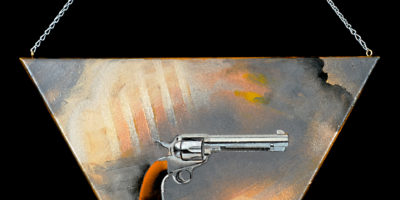Love/Hate Those Trashy Women’s Magazines?
Jennifer Nelson, author of Airbrushed Nation: The Lure & Loathing of Women’s Magazines (Seal, $16) and a veteran writer for women’s magazines, is deeply conflicted about her subject. From one passage to the next, Nelson flips back and forth between being critical of, and sort of sycophantically lauding, the magazine industry she surveys.
Nelson has armed herself with plentiful research to back up her criticisms of these magazines for promoting unrealistic standards of beauty and thinness; inadequately representing ethnic women (come to think of it, other than Natalie Portman and Rachel Weisz, how many Jewish women regularly grace magazine covers?); sensationalizing health issues and crime stories into breathless, must-read “concern porn”; promising way more on the covers than we’ll ever find inside; playing to, and amplifying, women’s insecurities; and yes, airbrushing every aspect of what they cover, visually and editorially. She cites reputable studies about everything from models being underweight — according to a 2008 Italian study, 54.5 percent of fashion models had a Body Mass Index (BMI) of under 18, an indication of probable eating disorder — to scented ads increasing readership by 136 percentº, according to a Roper Starch survey. She presents these in the body of the book, as well as in little side boxes labeled “Glossy Fact.” She strews other boxes around the book, too, some labeled “Readers Respond,” with quotes from women, and “Insider Input,” with comments from writers and editors. It’s awfully…magazine-like.
And then she seems to suck up to the industry she’s exposing – and from which she still makes a good deal of her living, whether writing for magazines herself, or teaching aspiring magazine writers in a MediaBistro online course entitled “Stiletto Boot Camp.” Passages like this one stand out (and irk): “At their best, women’s magazines are a space to be comforted, entertained and advised, a place that is fun to visit. Women’s glossies shine a light on us, and some may argue they dare to reveal our ideals, struggles, hopes and dreams so that we can enrich our lives.”
While Nelson has a great deal of magazine history covered, she makes very little of the advent of Ms. Magazine — at one point lumping it in with the glossies, and never mentioning that some time in the 1990s, Ms. stopped accepting advertisements because its editors recognized the inherent conflicts in journalism being funded by advertisers. She also devotes only three paragraphs to Jane Pratt, the founding editor of the irreverent, groundbreaking Sassy, Jane, and now xojane.com. There is no mention of feminist magazines like BUST or Bitch. And while she occasionally cites comments that appeared on Jezebel.com, Nelson overlooks that Gawker.com, launched in 2007 as an antidote to women’s magazines, and made huge waves by calling attention to the ways in which magazines digitally manipulated cover photos of celebrities. There are also no references to TheHairpin.com, another irreverent women’s magazine alternative, owned by Awl Media.
As I was reading Airbrushed, I tried to imagine who Nelson imagined her audience to be. Did she mean for this to be a behind-the-scenes guide for her Stiletto Boot Camp students? A textbook for women’s studies students? For journalism majors?
Despite its shortcomings, Airbrushed does generally cast a jaundiced eye on the often disempowering women’s magazine industry, and it does so in a well-defended, scholarly way (despite its perky-women’s magazine tone). It could serve as a good introductory peek behind the glossy covers for younger women — teens and college freshman — who are just beginning to look at the airbrushed images and wonder how they measure up.
Sari Botton is a writer and editor who has written for more retrograde women’s magazines than she’d care to admit.


